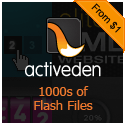Google pulled the wraps off of Chrome OS today, and while there isn't a general availability announcement today, they spoke briefly about the Chrome browser (Linux and Mac versions due this year, along with support for extensions) before diving into the nascent OS. You can expect to see Chrome ship in about a year, and showed the first glimpses of the new OS, details about the architecture, the hardware it will run on, and gave us the first hints about what the Google Cloud OS will really look like.

Here's why Chrome OS won't be replacing Windows anytime soon.
Chrome OS is a hardware platform as well as an OS
Chrome will have very specific platform requirements. It won’t run on machines with physical hard drives, only SSDs. Only certain Wi-Fi chipsets will be supported. Chrome OS will also have requirements for screen size, a full-sized keyboard, and a decent sized touchpad. They demoed Chrome OS working on an eeePC today, and said that you'd be able to upgrade some netbooks on the market today using a screwdriver.
Google didn't announce hardware specs, but confirmed that Chrome OS will work with x86 and ARM-based machines, and is designed with the 802.11n Wi-Fi spec in mind.

Chrome is Open Source
Chrome OS uses code from Linux, Webkit, Ubuntu, and Moblin. It's based on what seems like a heavily modified Linux kernel. While there's no beta announcement today, the code is open source as of today, so people can download and work on the code, as well as contribute submissions back to the project.
The Chrome Browser is the Primary Interface

If you've used the Chrome browser, Chrome OS will look very familiar to you. There is no conventional Desktop, so to speak. The browser window is your web interface, file explorer, and web app launcher. You can open multiple Chrome windows (think multiple desktops), each with their own set of tabs and swap between them from an even zoomed out further desktop.
Data is Stored in the Cloud
While the user can save data locally, whether it's photos, videos, etc, everything in the user's /home folder is synced to the cloud. The local copy is just a cache, presumably to allow you to use the netbook offline or where there's poor Internet. This is very similar to the thin clients that Sun pushed in the late 90s, in that there are relatively slow computers with ubiquitous network connections that rely on the Internet for most of their usability.

When you use any Chrome OS device, you log in and all of your data is there immediately. This means that presumably you log into your Chrome machine using your Google account. Of course, the big question is what happens when Google's servers go down. How accessible will your data be when you're away from the Internet for a few days?
Chrome OS uses a New Security Model
Because the Chrome browser is the OS, users don't have access to the root folders of the machine. You won't be able to install applications on the OS, but there will be a plugin/extension architecture, presumably that works with extensions similar to the Chrome browser.
The OS kernel and browser will be digitally signed, so the OS will be able to check itself at boot. (Web apps won't require digital signatures.) If it detects something amiss, it will simply restore the affected areas of the OS, leaving your home partition alone. The OS will also automatically update at launch, during its verified boot.
Chrome OS is for Secondary Computers
Google doesn't anticipate Chrome OS being used on your desktop PCs (at least, not yet). Dual-boot will not be possible, and it won't work with your third-party peripherals that use non-standard drivers. Keyboards, mice, and USB hard drives will work, but it's extremely unlikely that you'll be able to sync your iPhone with Chrome OS. They say that they'll have a novel solution for printing in the future.
Chrome OS Runs Web Apps Exclusively

We've said it before, but we'll say it again now. The only native app for Chrome OS is the browser. There's no mail application, no control panels, no application launcher outside of the browser. The OS is the Chrome browser--anything you can run in the Chrome browser runs inside that. Google showed web Excel from Microsoft and specifically mentioned Yahoo and other providers during the demo. Anything that runs in the Chrome browser on Windows, will run on Chrome OS. All of the applications you'll run on Chrome OS are web applications.
During the Q&A Michael Arrington explicitly pointed out that this strategy exactly mirrors Steve Jobs' comments during the initial iPhone launch. The response? The iPhone has native apps, Chrome OS only has a browser.
Chrome is more like a TV than a Computer
It's instant-on, cold booting in about 7 seconds, and on the desktop about 3 seconds after that. This is why they're using a unique platform, so they control the hardware and software and can get performance and experience they need.
Here's Google's over-simplified explanation of Chrome OS:
Image credits: Gizmodo and Google






























